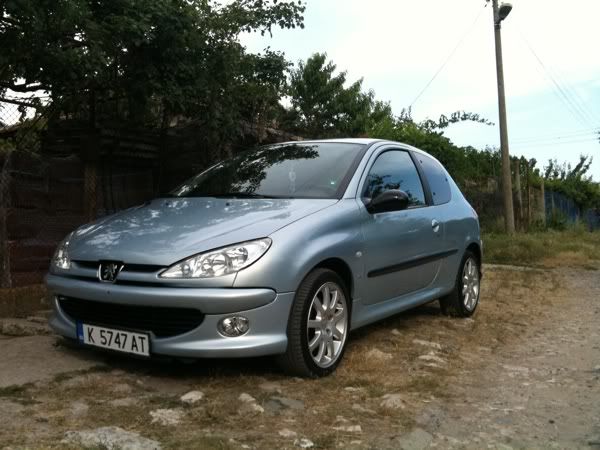

 
|
|

|
About the 307 brake pedal |
| • Homepage » PEUGEOT MODELS (FAULTS AND SOLUTIONS) » 307 | |
| 08.05.2020 15:07 | # 1 |
 Faruk Faruk |
|
|
Hello friends
In the winter, the brake pedal is very hard when you leave the handbrake on the gear without pulling the handbrake, to press the brake duo and start the vehicle without clutching the handbrake, and when you pump the pedal when this car is not working, it becomes hard as it swells. As a result, when you leave in the evening and press in the morning, is the brake pedal hard on you? Or is there a problem with my 307 ??? |
|
| 08.05.2020 15:07 | # 2 |
 voodoo voodoo |
|
|
it shouldn't be like that ..... problem in your car .. not in mine ....
|
|
| 08.05.2020 15:07 | # 3 |
|
I heard that the brake was softened and even ended, but I never heard it hardened :)
|
|
| 08.05.2020 15:07 | # 4 |
|
Normally it is already aga no matter which car it is, when the car is not working, the brake is hard, if it is hard, there is a problem, good evening ... |
|
| 08.05.2020 15:07 | # 5 |
 g-demir g-demir |
|
|
it happens because it doesn't press the electronic hydraulic brain, but as you said, I have never experienced it. I always pull the handbrake and shift into neutral. let me try and see how
|
|
| 08.05.2020 15:07 | # 6 |
|
In our brake system, behind the pedal is the wethouse (air assist), behind the brake master center and the top of the hydraulic container. If there is abs in the vehicle, 2 hydraulic pipes come out from the brake center and go to the abs engine. From there it is distributed to 4 wheels. If abs is absent, 4 pipes come out from the brake center and go directly to the wheels. When the brake is applied, the pedal firstly moves to the westhouse. The air pressure in the westhouse begins to tighten the pistons inside the brake master center, and braking is achieved by the pressurized hydraulics. Thanks to this air aid system, which can be called hıdrovak, we obtain very strong braking power with little force. hıdrovak is a part that increases brake comfort and power. hıdrovak takes the required air from the engine as long as the engine is running. On gasoline vehicles, a hose comes from the direct suction manifold. In diesel vehicles, as far as I can see, there is a pump on the right side of the engine, such as a pump connected to the camshaft. The hose goes from there to the top. As long as the engine is running, the hıdrovak is running. When the engine does not start, the brake will be soft until the air in it runs out. Depending on the dose, you can press the pedal 3-5 times and when the air is over, it becomes a stone. In this case, you cannot stop the car even if you try to apply the brakes. The vehicle is never stopped when looking at that pain. If you press the brake repeatedly after stopping the vehicle, you can see what happened. there is no harm in your attempt. When the air inside is over, if you start the engine again, the air will fill up and work again. Providing reminding that there may be differences from vehicle to vehicle, from brand to model, I would expect you to never lose the air pressure inside the hıdrovagın and be able to apply the brakes in the morning when you stop in the evening. If it is losing its air, I think it is a failure because it is missing from somewhere. It makes sense to be mechanically so ...
|
|
| 08.05.2020 15:07 | # 7 |
 Faruk Faruk |
|
|
In our [QUOTE = cecoli] brake system, there is the brake center behind the pedal (air assist), behind the brake master center and the top of the hydraulic container. If there is abs in the vehicle, 2 hydraulic pipes come out from the brake center and go to the abs engine. From there it is distributed to 4 wheels. If abs is absent, 4 pipes come out from the brake center and go directly to the wheels. When the brake is applied, the pedal firstly moves to the westhouse. The air pressure in the westhouse begins to tighten the pistons inside the brake master center, and braking is achieved by the pressurized hydraulics. Thanks to this air aid system, which can be called hıdrovak, we obtain very strong braking power with little force. hıdrovak is a part that increases brake comfort and power. hıdrovak takes the required air from the engine as long as the engine is running. On gasoline vehicles, a hose comes from the direct suction manifold. In diesel vehicles, as far as I can see, there is a pump on the right side of the engine, such as a pump connected to the camshaft. The hose goes from there to the top. As long as the engine is running, the hıdrovak is running. When the engine does not start, the brake will be soft until the air in it runs out. Depending on the dose, you can press the pedal 3-5 times and when the air is over, it becomes a stone. In this case, you cannot stop the car even if you try to apply the brakes. The vehicle is never stopped when looking at that pain. If you press the brake repeatedly after stopping the vehicle, you can see what happened. there is no harm in your attempt. When the air inside is over, if you start the engine again, the air will fill up and work again. Providing reminding that there may be differences from vehicle to vehicle, from brand to model, I would expect you to never lose the air pressure inside the hıdrovagın and be able to apply the brakes in the morning when you stop in the evening. If it is losing its air, I think it is a failure because it is missing from somewhere. It makes sense to be mechanically so ... [/ QUOTE] tsk s brother, so that mine is missing biyerden.
|
|
| 08.05.2020 15:07 | # 8 |
 Faruk Faruk |
|
|
my goal was to ask the situation like this in the 307s and other vehicles (hard brake pedal in the morning) Thanks to the friends who commented. |
|